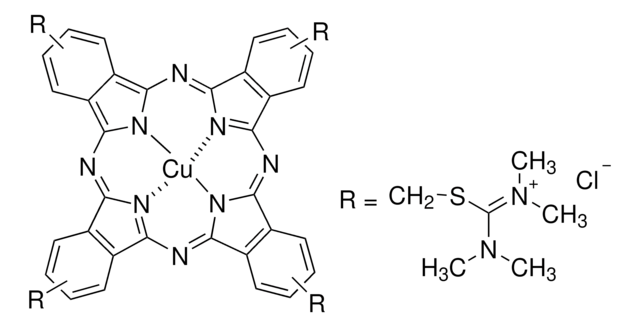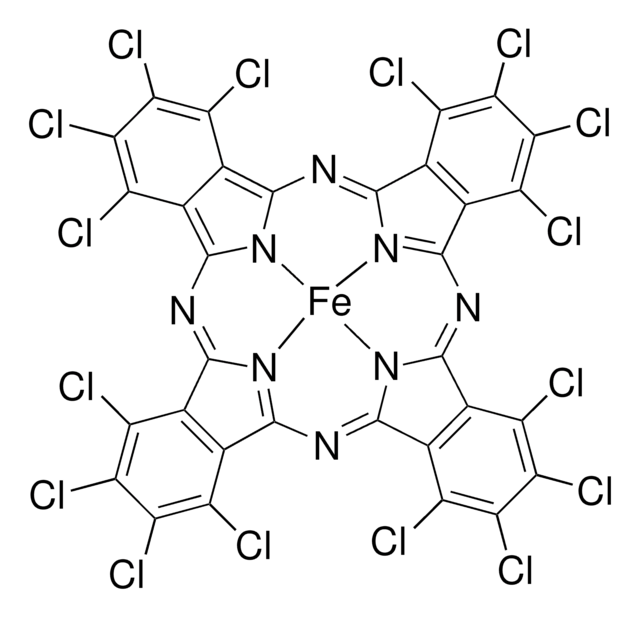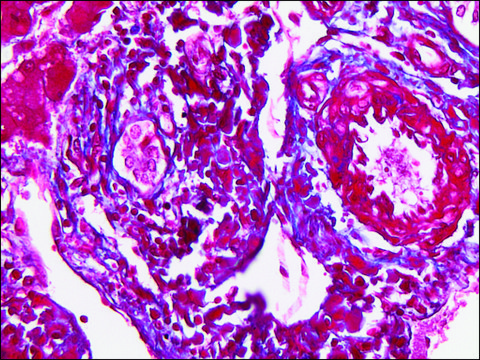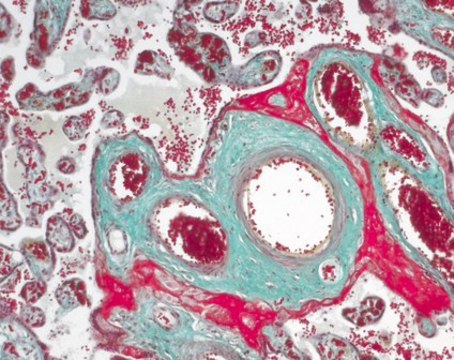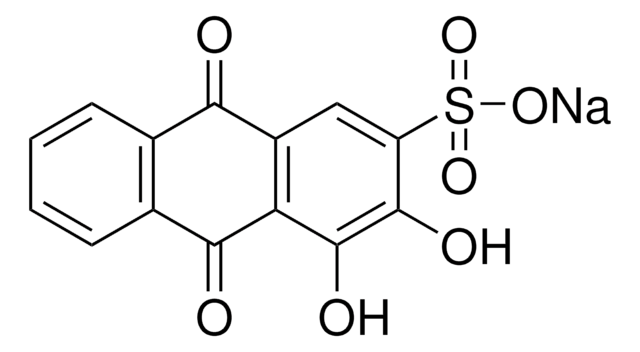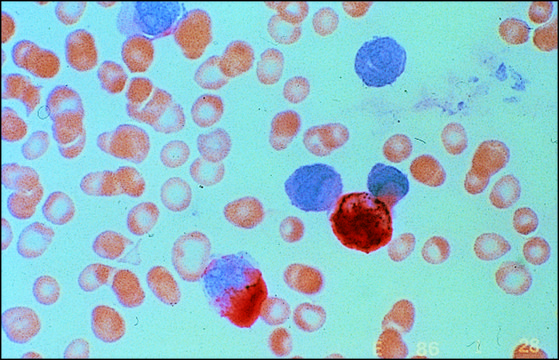All Photos(1)
About This Item
Linear Formula:
C40H46N8S4Cl2
CAS Number:
Molecular Weight:
838.01
Colour Index Number:
12840
UNSPSC Code:
12171500
Recommended Products
composition
Dye content, ~65%
Looking for similar products? Visit Product Comparison Guide
Storage Class Code
11 - Combustible Solids
WGK
WGK 3
Flash Point(F)
Not applicable
Flash Point(C)
Not applicable
Regulatory Information
新产品
Choose from one of the most recent versions:
Already Own This Product?
Find documentation for the products that you have recently purchased in the Document Library.
J T Anim et al.
Acta histochemica, 102(2), 129-137 (2000-05-29)
The recent implication of Helicobacter pylori in the pathogenesis of gastritis-peptic ulcer syndrome and its relevance for the development of upper gastrointestinal malignancy warrant efficient methods for the detection and demonstration of the organism in biopsy specimens. We have compared
J C Stockert et al.
Acta histochemica, 85(1), 59-63 (1989-01-01)
Fluorescence characteristics of the cationic dye Alcian yellow are described. Under ultraviolet excitation, the chromatin and basophilic cytoplasm from cell smears show a blue-white emission, which depends on the presence of nucleic acids. Glycosaminoglycans-containing structures (mast cell granules, cartilage matrix)
G Mariani et al.
Journal of periodontology, 67(1), 21-27 (1996-01-01)
The overgrowth-affected gingiva of patients treated with cyclosporin A after kidney transplant was examined with ultrastructural and histochemical methods to evaluate the involvement of connective tissue. Gingival overgrowth has the same clinical signs as local edema. The ultrastructural study showed
Correspondence re: Vartanian RK, Leung JK, Davis JE, Kim YB, Owen DA: A novel alcian yellow-toluidine blue (Leung) stain for Helicobacter species: comparison with standard stains, a cost-effectiveness analysis, and supplemental utilities. Mod Pathol 1998;11:72-8.
N J Carr et al.
Modern pathology : an official journal of the United States and Canadian Academy of Pathology, Inc, 11(8), 798-798 (1998-08-28)
J Van Minnen et al.
Journal of neurobiology, 12(3), 297-301 (1981-05-01)
The neurosecretory system of the giant garden slug Limax maximus was studied using the alcian blue/alcian yellow (AB/AY) staining technique for neurosecretion. Stainable cells could be identified in the paired cerebral, pleural, parietal, and buccal ganglia, and in the visceral
Our team of scientists has experience in all areas of research including Life Science, Material Science, Chemical Synthesis, Chromatography, Analytical and many others.
Contact Technical Service